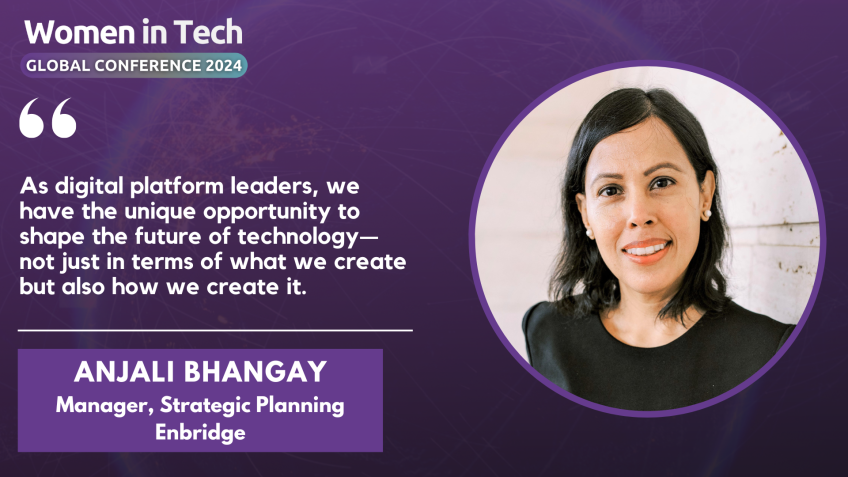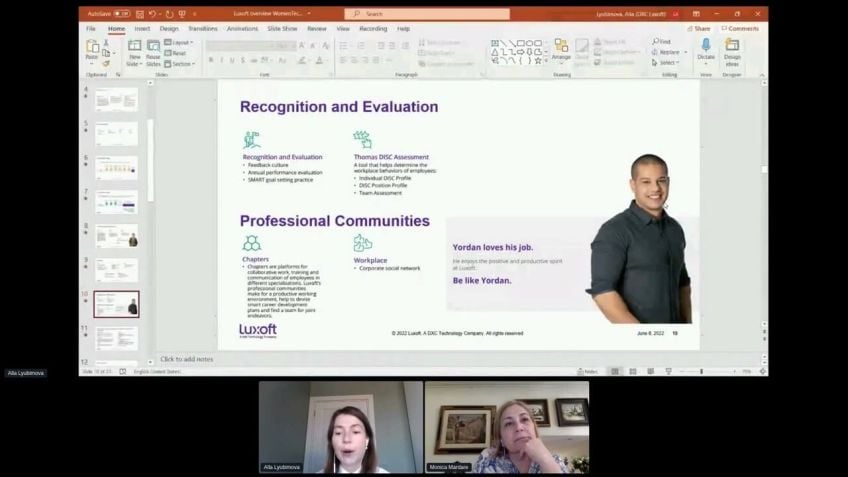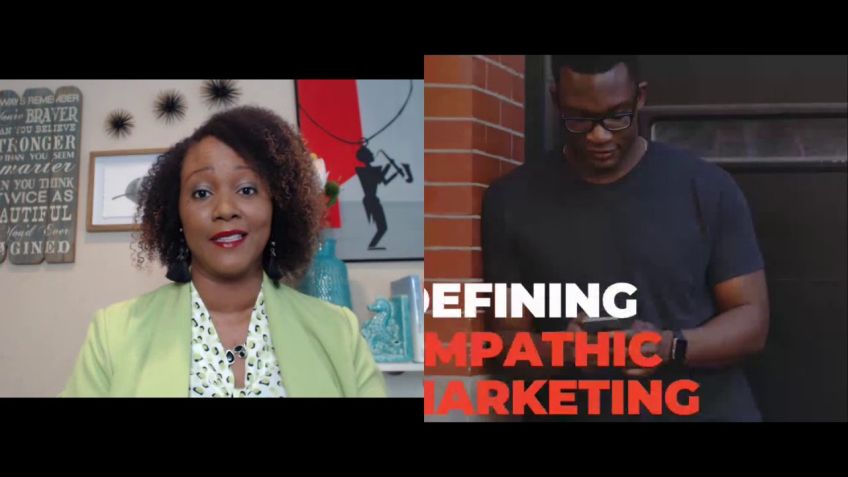Alli Tiscornia Increasing NRR and GRR through Customer Success Apply to Speak (87317)
Alli Tiscornia
Chief Customer OfficerHeather Philbin
Senior Director, Communications and BrandReviews
Boost Revenue and Retention with a Digital-First Strategy
Welcome to today's session where we delve into how you can enhance your Digital Revenue Retention (DRR) and Net Revenue Retention (NRR) using a digital-first strategy. I am Ali Temple, the Chief Customer Officer at Churn Zero. At Churn Zero, we supply a customer success platform that offers insights on the health of your customer base and automation of responsive actions.
Preparing for a Digital-First Strategy: Essential Elements
A successful digital-first strategy hinges on four critical factors:
- Data
- A segmentation strategy for your business
- An automation tool
- A customer journey map
Data Acquisition and Organization
Your digital-first journey needs data, but perfection should not be the enemy of progress. For start, access clean and accurate data from your CRM, support tickets or product usage and continually refine your data pool. Utilize finance information, customer surveys, project management data, and data from a learning management system.
Note: A unique identifier and careful attention to parent-child relationships and account fields will help you pull together data effectively.
Segmentation Strategy
A key element of a digital-first strategy is a segmentation strategy for your business. While many organizations initially focus on contract value, other segments such as customer employee count, product type, and industry vertical can be integrated over time to refine your tactical approach.
Building a Data-Driven Digital-First Strategy in 4 Steps
Once your data is set and segmentation strategy chalked out, the following steps will help you formulate an effective digital-first strategy:
- Organize your data and establish an automation tool. An effective digital-first strategy is not just about deploying an email campaign but combines various aspects of the digital world.
- Outline your digital-first customer journey map. Constructing a customer journey map enables you to plot the experiences and engagement of your customers.
- Forge partnerships across various segments of your organization. Collaboration with product and marketing teams enables optimal data acquisition and content development.
- Establish a feedback loop to monitor customer experience and refresh content to avoid staleness, ideally refreshing the content on a quarterly basis.
Mapping a Sample Digital-First Customer Journey
It is best not to overthink your customer journey, aiming for about thirty touchpoints rather than hundreds. Modern tools such as in-app messaging, video, webinars, and even AI tools can help to provide a more engaging journey for your customers.
Final Words
To round up, create your customer journey map, ensure that you can attribute data using unique identifiers, and don't shy away from experimenting with your long-tail customers. Through these steps, you can develop a digital-first customer success journey for your business and beyond.
If you have any questions or comments on implementing a digital-first customer success journey in your company, feel free to reach out.
Video Transcription
Good morning everybody. While we are waiting for people to join. I wanna let everybody know that you are in the grow revenue and retention using a digital first strategy hosted by turn zero. We will get started in about one minute after.Uh so hold tight while we wait for everybody to join and then we'll get started. All right, everybody. I'm going to get started. So let me introduce myself. I am Ali Temple, Tus Cornia. I am the chief customer officer at Churn Zero. Churn Zero is a customer success platform that provides insights into the health of your customer base while allowing you to take action into those insights through automation. So welcome today to our session. So I get asked a lot as a chief customer officer, how to do more with less. And one of the things that people are really interested in these days in these in this macroeconomic environment is growing their drr and growing their NRR with a digital first strategy which we used to call once upon a time tech touch, but I like digital first much better. So uh before you can start any kind of digital first strategy you really need four things. You need data, you need to be able to identify a segmentation strategy for your business. You need an automation tool of some type and you need a customer journey map.
That last one is really important. And we're gonna talk in more detail about that in a minute. But let's first talk about data. Everybody's favorite subject, right? One of the things that hampers people from starting a digital first journey is the idea that their data just doesn't look good. It's not good, it's not clean. Let me tell you, you're never going to have clean data. Don't let perfection be the enemy of good. Focus on getting whatever data you can that you know, is accurate and be comfortable with the fact that you are gonna iterate on it. So where do you pull that data from? You're gonna pull it from your CRM system, you're gonna pull it from support tickets. Most importantly, you're gonna pull usage data from your product. You have to understand what your customers are doing with your product. If they're logging in, if they're using their product, your product or if they aren't, you're gonna wanna pull in finance information, you're gonna wanna pull in any kind of customer surveys. If you own onboarding, you're gonna wanna pull in project management data. You're gonna also wanna pull in data from a learning management system. If you have any kind of automated education for your customers. Next Um And most importantly, um you wanna think about how you get your data in order.
And one of the things that hampers people from getting into any kind of automation tool and their complaint about having dirty data is not being able to pull the data together. So you really need to make sure that you have some sort of unique identifier for your data, for your accounts that pulls all of the data sources together and makes that usable in some kind of system. The other thing you have to think about is your parent child relationship. If a parent, child relationship is important to your business and to your strategy, your data is gonna need to reflect that. And then also you're gonna need to make sure that you have accurate account fields and contact fields because that's where all automation systems really pull off of those two fields. So now you want to think about what are the types of data we talked about, where do you pull the data from? But now you want to think about what are the types of data that you wanna pull? And we like to think about it. We like to organize it in four quadrants. You have your objective data, your subjective data, your internal data and your external data. So again, we talked about usage, product usage is incredibly important to understand the health of your customer base. And it's critical for your digital first journey.
So you want usage data, you want those support tickets, you want to know anything about open bugs that's going to indicate whether your customer is healthy and happy. Then when you go down, move a little bit further into the subjective realm, you're gonna wanna know what CS M sentiment is, whether the customer is the right fit for your IC P. Um And what kind of engagement they have had with you and their responsiveness to you. When you think about more objective type of data, you're really gonna think about the tenure of your customer, the status of the customer and the industry, health and what kind of uh champions and decision makers you've had. And then again, uh when you talk about external subjective data, it's really about what kind of feedback are you getting from your customer and what kind of uh and how you can uh articulate that feedback next. And most importantly is your segmentation strategy. Everybody thinks that when they do a digital first strategy that they are immediately going to service the long tail and that's incredibly important and that's a great idea on where you should start. But I do wanna let everybody know that a digital first strategy, you can use that and leverage that for every single segment um of your customer success organization. It doesn't just have to be the long tail. You can use digital first for your highest touch customers as well.
So when we think about segmentation. Uh There are different ways to think about it. And a lot of organizations who are in the growth phase start with contract value. And I think that is perfectly fine and I highly recommend it when you start with se segmentation, I encourage you to start simply. So contract value is a perfect way to think about uh where you, where you wanna focus your attention as you move into the scale uh maturity of your organization, then you're gonna start looking at things like customer employee count. Is it an SMB business? Is it an enterprise business? Um Is it mid market? You'll also want to think about product type if you have multiple products and you should always think about as you move up the maturity model, combining these into your segmentation model, right? So it can be contract value and customer employee count and product type. I do caution everybody that if they aren't, if the organization isn't very mature in their segmentation approach that you want to leave optimize uh optimization as industry vertical servicing needs and use cases till you get a little bit further in your segmentation journey.
And you're a little bit more mature as an organi or as an organization, you don't wanna just start with industry vertical as your segmentation. So now that we have beautiful, perfect data and we've segmented our business and we've segmented uh into our business strategy. Now we're gonna put a plan in action. So here are the different steps to building a data back. Digital first strategy, you organize your data and remember it's not ever gonna be perfect. So you're gonna iterate on that, you're gonna implement some sort of automation tool. The key to digital first is not simply an email campaign. Digital first strategy is not just about email. I caution everybody who starts down this journey that it's not simply emailing your customers to death. Digital first is combining a lot of different aspects of uh a digital world.
It's video, it's webinars, it's it is email, but there are multiple different pieces to this strategy. You then wanna outline your digital first customer journey and this is hugely important and it's something that a lot of people tend to miss and I really wanna encourage people not to skip this step. Don't be intimidated by building your customer journey. A customer journey map needs to be no longer than two slides at most. I would highly encourage you to put it on one slide. It's a great visualization of what you want customers to experience uh feel and think as they proceed down this digital journey, right? And uh one of the things that I think people get stuck on um is they over engineer their customer journey map. Don't do that, don't worry about it. Don't think that you need to have 700 different touch points. I would encourage you to not start with that start small, start simply and then iterate. One of the best ways to go to different partners within the organization is because is using this journey map as a visualization of what you're trying to accomplish. And the next step is um you have to partner with different parts of the organization, right? You're gonna have to partner with product to be able to get that usage data.
But you're also gonna have to partner with your marketing team to be able to develop really good content and to be able to iterate on that content so that you're reaching your customers. And again, you're not just doing some sort of drip email campaign. Uh And then you have to create a feedback loop. You have to understand from your customers how they are experiencing this digital first journey. Are they getting value out of it? Is it a good experience for them? Um And then you have to again iterate to figure out what you need to change in that journey map, to make sure that your customers are getting the most out of this. And then you have to build a content refresh model. So you don't, the last thing you want is for your content to get stale. And that's where you're partnering with marketing. I highly encourage people to think about refreshing the content on a quarterly basis. I know that seems like a lot time. But if you think about trying to refresh the content on a monthly basis, you could potentially get overwhelmed. So start with a little bit longer, see um what kind of data you're bringing in from the digital first journey and then you can go back and iterate. So this is what a sample digital first customer journey looks like. And again, uh as I said, it doesn't have 700 different touch points, don't do that. This one only has about 30.
And again, we articulate the digital first journey uh with different things related to a digital experience, right? So one of the things we talk about is in app messaging, in app messaging is incredibly critical to a digital first strategy. So our videos, so our webinars, it's not just about the email, whatever you can do to highlight your product within the product is huge for us at turn zero. When we talk about new product feature releases and announcements, we're moving to a strategy where we're doing everything in app rather than just trying to email our customers. I also highly encourage people to take advantage of video, right? One of the coolest things ever is when a new customer is being on board and they get a video from the CEO telling them how happy they are that they're a customer. So think about those different types of strategies, different, interesting and innovative ways to reach your customer.
And then the next thing I think you want to think about is as you're as you're walking through the journey. How can you leverage the newest, latest and greatest A I tools that are out there, right? The A I tools will help with a lot of this content creation. It will help you to refresh that content. Um And it will actually be much easier to put that content into your digital first strategy if you're using an A I I tool. So one of the things uh that we do at turn zero is we have our customer success A I product which allows us to uh simply enter in something that we want like an email. Uh uh ask the A I tool uh to produce that email for us. And uh it comes up with something in about 30 seconds. And, and I have to say that this is also uh a tool that we have used for different content creation for scripts for videos, scripts for webinars. Uh We've also used this tool to develop um content for powerpoint. So A these A I tools are incredibly powerful and they should be part of your digital first journey. So a couple of things to reiterate, you have to do your customer journey map. Don't be intimidated by the data. Uh Make sure that you can attribute the data with a unique identifier. Build that customer journey, build your segmentation model. Um Use your digital first journey with your long tail experiment.
See what you get from that digital first experience with your uh long tail. A lot of companies are seeing a lot of success with renewals through the digital first journey and then use that, use what you've already built for your white glove um customers as well. And one of the things that you can do with the, with the customer journey map is when you're on boarding your customers, you can use that email from the CEO the video with the CEO with your high touch customers. They're gonna love that just as much as your long tail. So that's it for me. I'm leaving a couple of minutes open for any additional questions uh that you might have uh and how you can build out your customer, uh your digital first customer success journey.
Thanks, Ally. I'm checking uh questions right now. We, we don't have any coming in just yet, but uh we'll just give it another maybe 30 seconds.
All right, I do have one from P Gallagher. It looks like how many touch points have you been successful with for driving renewals? I think that really is very dependent upon your business. Um I think as I said earlier, you wanna keep it relatively simple, but you wanna make sure that you're mapping out the entire experience, right? So start from acquisition all the way through on boarding all the way through adoption and then you think about retention. So in terms of when you start that retention journey, um I usually started at about um 90 to 100 and 80 days before the renewal, you start sending out messages to your customers. All right. Any other questions? If not? Uh I think we're gonna probably end a little bit early. Give folks some time back. Thank you very much for your time. And if you have any questions or comments uh about the digital first customer success journey and how to implement that at your company, Please feel free to reach out to me. Uh I am on linkedin.
Thanks so much Ellie.
Thanks Heather. Bye everyone.







No comments so far – be the first to share your thoughts!